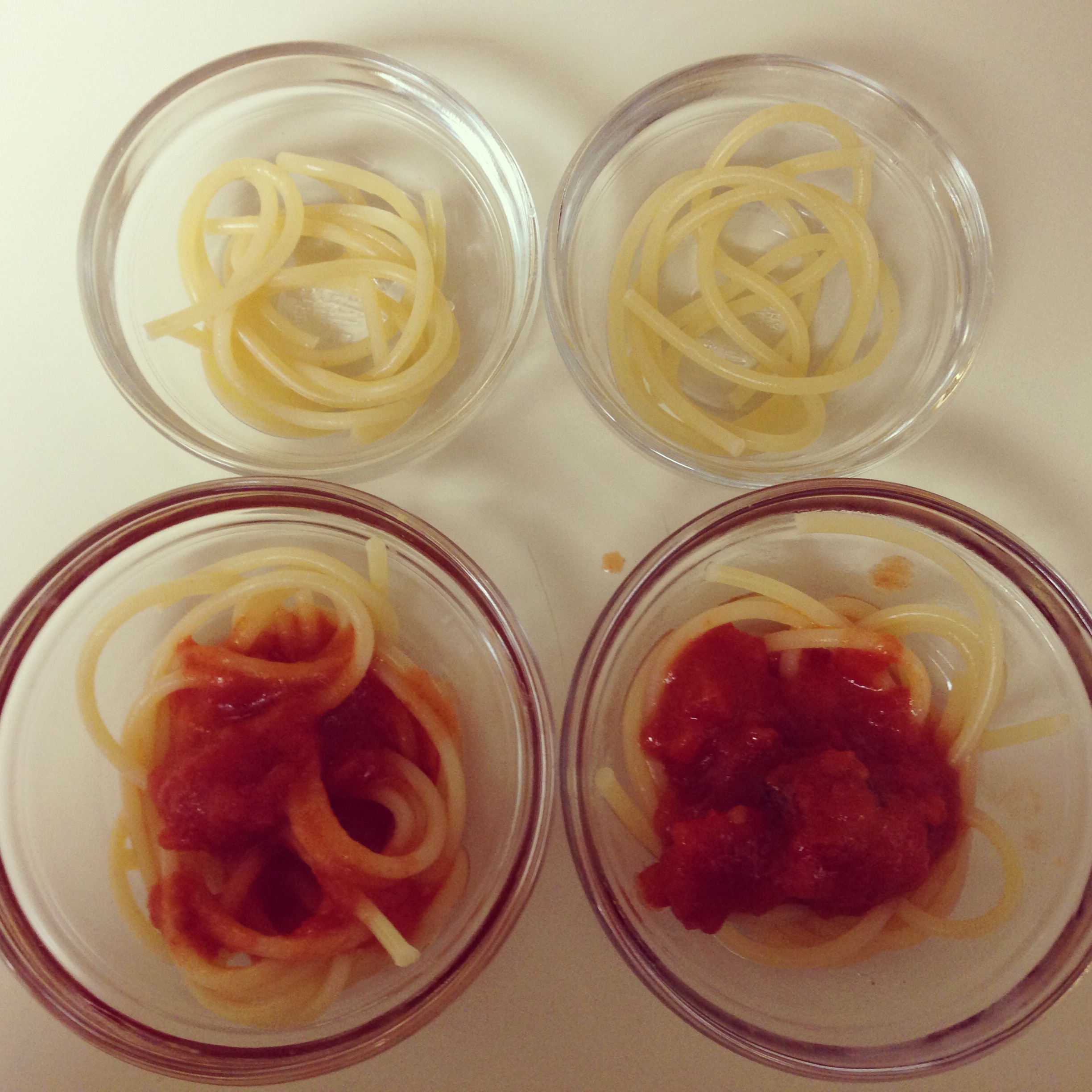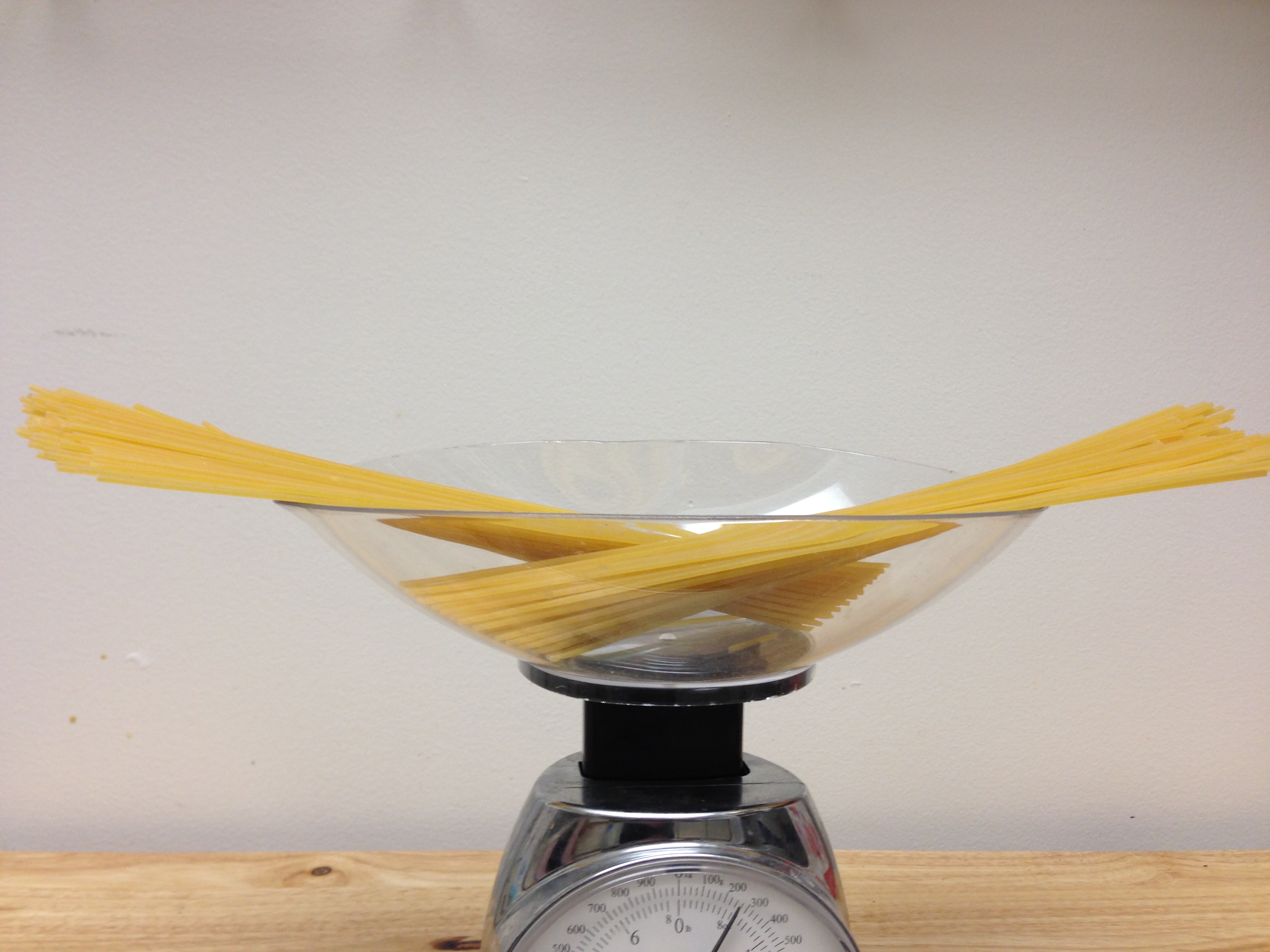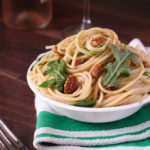 Making spaghetti was one of the first meals I made when I started cooking for myself in college. And I don’t think I’m alone. I bet spaghetti is one of the first things a lot of people learn to cook. It’s so easy to make a tasty end product, that I rarely thought about if there was a best way to do it. Sometimes I salt the pasta, sometimes I don’t. Sometimes I let it come to a rolling boil and sometimes I don’t. Sometimes I stir a lot, and sometimes I don’t.
Making spaghetti was one of the first meals I made when I started cooking for myself in college. And I don’t think I’m alone. I bet spaghetti is one of the first things a lot of people learn to cook. It’s so easy to make a tasty end product, that I rarely thought about if there was a best way to do it. Sometimes I salt the pasta, sometimes I don’t. Sometimes I let it come to a rolling boil and sometimes I don’t. Sometimes I stir a lot, and sometimes I don’t.
And then, I was on my way to work listening to the America’s Test Kitchen podcast and it got me to curious about how to cook the best tasting pasta. They were talking about salting pasta and they asserted that salting pasta makes a huge difference in taste. Could it really be that serious? They said that it especially made a difference when you put sauce on your pasta. They said if you tested it at home, you’d definitely be able to tell the difference.
Could I really tell the difference? I had to know. Ryan didn’t think salt vs no-salt would make much of a difference. I thought we could tell the difference without sauce, but once the sauce was on I didn’t think we’d know the difference. And so, with our hypotheses set we were ready to test.
The Experiment:
1. In two large pots I boiled 10 cups of water (2 and a half quarts).
2. I measured out 10 ounces of pasta and split that in half (the amount is a bit random but it’s about what we had in the house).
3. When the first pot came to a rolling boil I added 5 ounces of pasta.
4. When the second pot of pasta came to a boil I added 1 tbsp of salt and then I added the pasta. If your eyes are popping out of your head at 1 tbsp of salt, don’t worry it doesn’t all get absorbed into the pasta. As well, after doing a lot of research experts say pasta water should taste “like the sea” and that a good ratio is 1 tbsp to every 2 quarts of water. Once you drop in that salt, taste the water. I definitely tastes like the sea.
5. I cooked the pasta for 9 minutes until it was al dente.
6. I drained the non-salt pasta first, then drained the salted pasta.
7. I tasted the non-salt pasta plain, then salt pasta plain, then non-salt with sauce, then salt pasta with sauce.
8. After I tasted I made a sample for Ryan, who did not know which pasta was which before tasting. The first one he tried was salted pasta, and he knew it immediately. He then sort of sampled back and forth and tried all four combinations of pasta.
Conclusions:
We could definitely taste the different between salted and un-salted pasta when it was plain. Although plain pasta tastes fine ordinarily, when compared right next to the salted pasta, it tasted bland.
Ryan and I were most surprised about the difference the pastas took on when we tasted them with sauce. Ryan simply said that the salted pasta “made the sauce taste better.” I agreed. I found that with salted pasta, the sauce tasted more complex and interesting. So, America’s Test Kitchen was completely right! They said that adding salt to the water is the only chance you have to season pasta. I never thought of it like that, but it does make sense, and as I tasted it does make a difference. I’ll be sure to salt my pasta water from now on!





Super cool. Great to see the scientist is coming out of you!